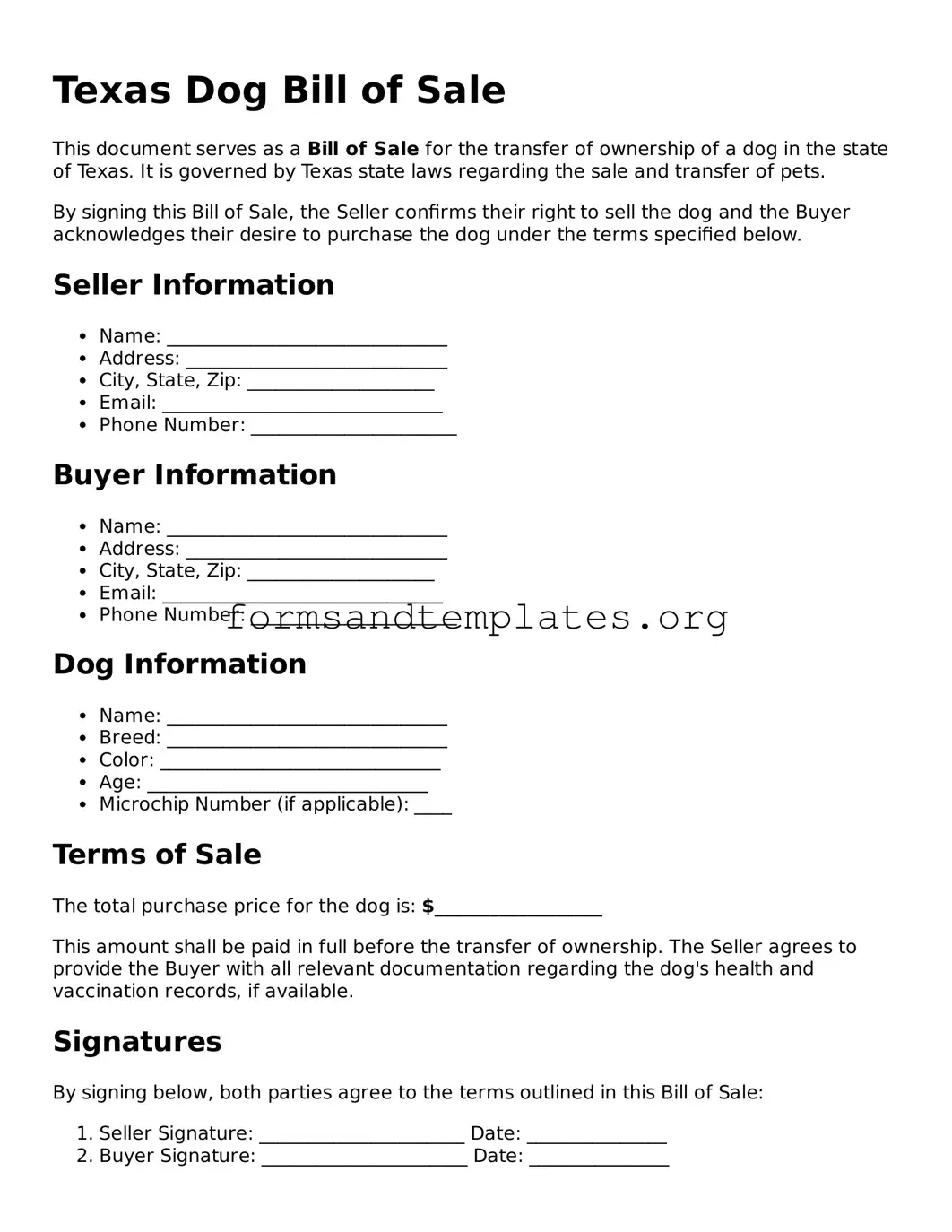Texas Dog Bill of Sale
This document serves as a Bill of Sale for the transfer of ownership of a dog in the state of Texas. It is governed by Texas state laws regarding the sale and transfer of pets.
By signing this Bill of Sale, the Seller confirms their right to sell the dog and the Buyer acknowledges their desire to purchase the dog under the terms specified below.
Seller Information
- Name: ______________________________
- Address: ____________________________
- City, State, Zip: ____________________
- Email: ______________________________
- Phone Number: ______________________
Buyer Information
- Name: ______________________________
- Address: ____________________________
- City, State, Zip: ____________________
- Email: ______________________________
- Phone Number: ______________________
Dog Information
- Name: ______________________________
- Breed: ______________________________
- Color: ______________________________
- Age: ______________________________
- Microchip Number (if applicable): ____
Terms of Sale
The total purchase price for the dog is: $__________________
This amount shall be paid in full before the transfer of ownership. The Seller agrees to provide the Buyer with all relevant documentation regarding the dog's health and vaccination records, if available.
Signatures
By signing below, both parties agree to the terms outlined in this Bill of Sale:
- Seller Signature: ______________________ Date: _______________
- Buyer Signature: ______________________ Date: _______________
This Bill of Sale is legally binding and is recognized under Texas law.
